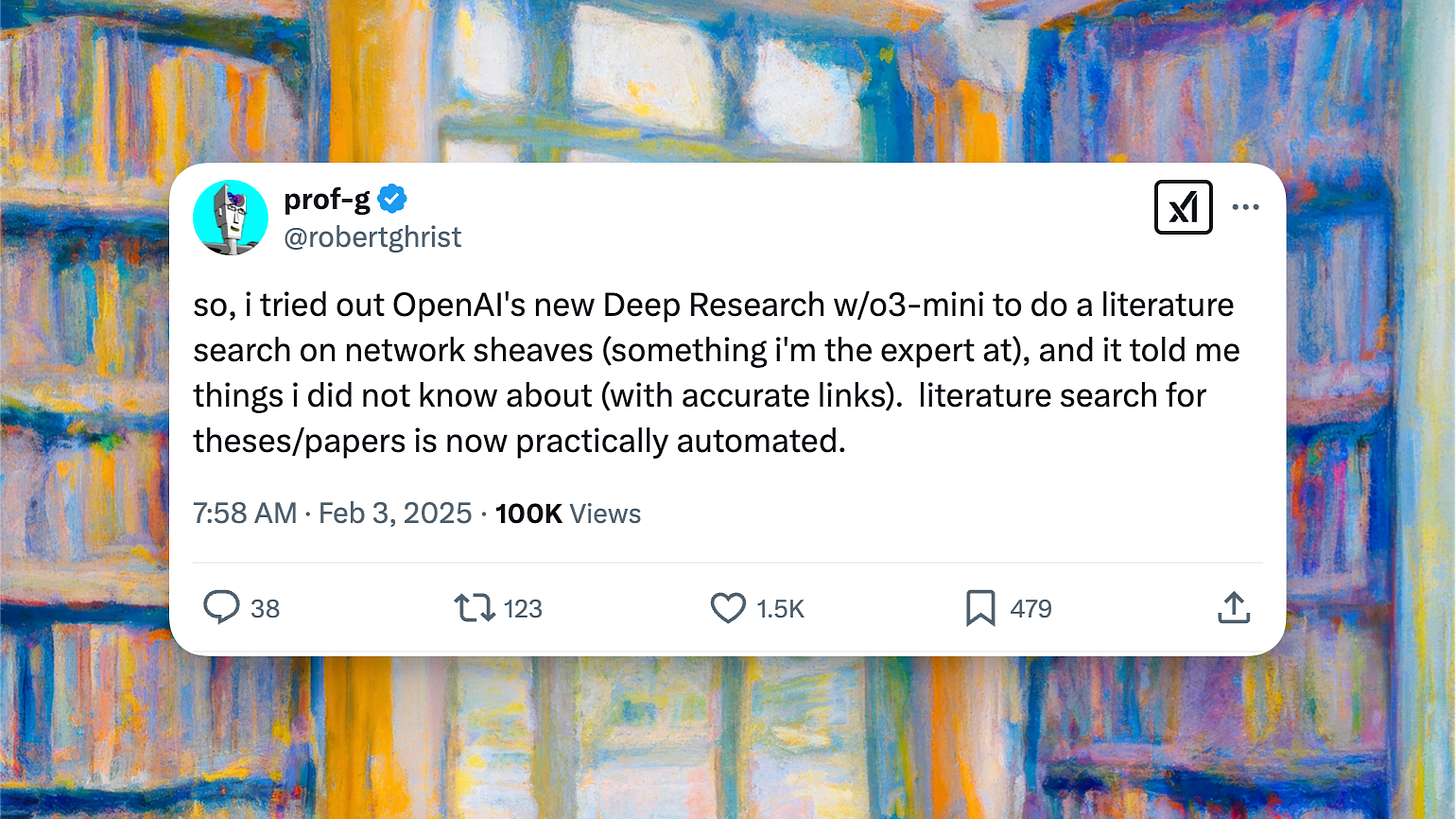How educators are using deep research in ChatGPT
Conduct multi-step research in minutes
ChatGPT for Education explores how AI can help you teach and learn more effectively. Subscribe to receive product education posts like this from OpenAI and profiles from innovators in education in your email inbox.
This week, we launched deep research, a new agent that conducts multi-step research on the internet for complex tasks. Give it a prompt and ChatGPT will find, analyze, and synthesize hundreds of online sources to create a comprehensive report in tens of minutes versus what would take a human many hours.
In the words of Ethan Mollick:
This represents a fundamental shift in how AI can engage with academic literature. For the first time, an AI isn’t just summarizing research, it’s actively engaging with it at a level that actually approaches human scholarly work.
How to use deep research
In ChatGPT, select 🔭 “Deep research” in the message composer and enter your query. Tell ChatGPT what you need — whether it’s a literature review on a topic in your field, an analysis of a series of randomized controlled trials, or a report that organizes key findings in a table and includes citations. It will likely ask you follow-up questions to refine its research, and once the agent starts running, a sidebar appears with a summary of the steps taken and sources used.
Note that deep research is currently available to Pro users, and will expand to Plus and Team, followed by Enterprise.
What can you use it for?
Here are a few prompts people have already tasked deep research to help them with.
Penn mathematics professor Robert Ghrist asked it to do a literature search on network sheaves (something he’s the expert on) — and here was his response:
Nathan Cole asked for an investigation into the molecular basis of lung cancer and emerging treatments, and deep research produced a report, complete with a table of key biomarkers and their clinical significance. Nathan said the report would otherwise have taken him several days to put together:
Deep research can do more than just gather knowledge — it can also uncover what’s missing. After generating a report on hypermobile Ehlers-Danlos Syndrome (hEDS), biomedical scientist and immunologist Derya Unutmaz asked deep research to take it a step further: identify the gaps that remain in curing it.
The result? A comprehensive overview highlighting critical gaps in biological understanding, diagnostics, treatment, and even systemic issues in awareness and care:
Tips and tricks
Make sure to tell deep research what sources you are looking for.
Do you want to limit sources to academic research, randomized controlled trials, and empirical studies?
Any specific time frame for the literature (e.g. the past 5 to 10 years, or a broader scope)?
Do you have documents or spreadsheets that you want to add for context?
Specify the format you want deep research to output.
You can ask for the research to be presented in the form of a structured report with headings and citations, a graduate-level discussion guide, or even a table.
Share what you learn with other educators
Have something on your to-do list that you’ve been meaning to research but don’t have the time for?
Go ask deep research, share what you asked, and include a link to the chat in the comments.
If you don’t yet have access to deep research, share a prompt in the comments and we can ask it for you!






I wish ChatGPT’s deep research quota per month was higher—somewhere around 50 or even 100. A limit of 10 feels too low for me as an avid researcher.
Here's my article that features using Deep Research:
https://substack.com/@chessurisme/note/p-158283218?utm_source=notes-share-action&r=59su3u
Hi! I want to contribute in your blog🩶